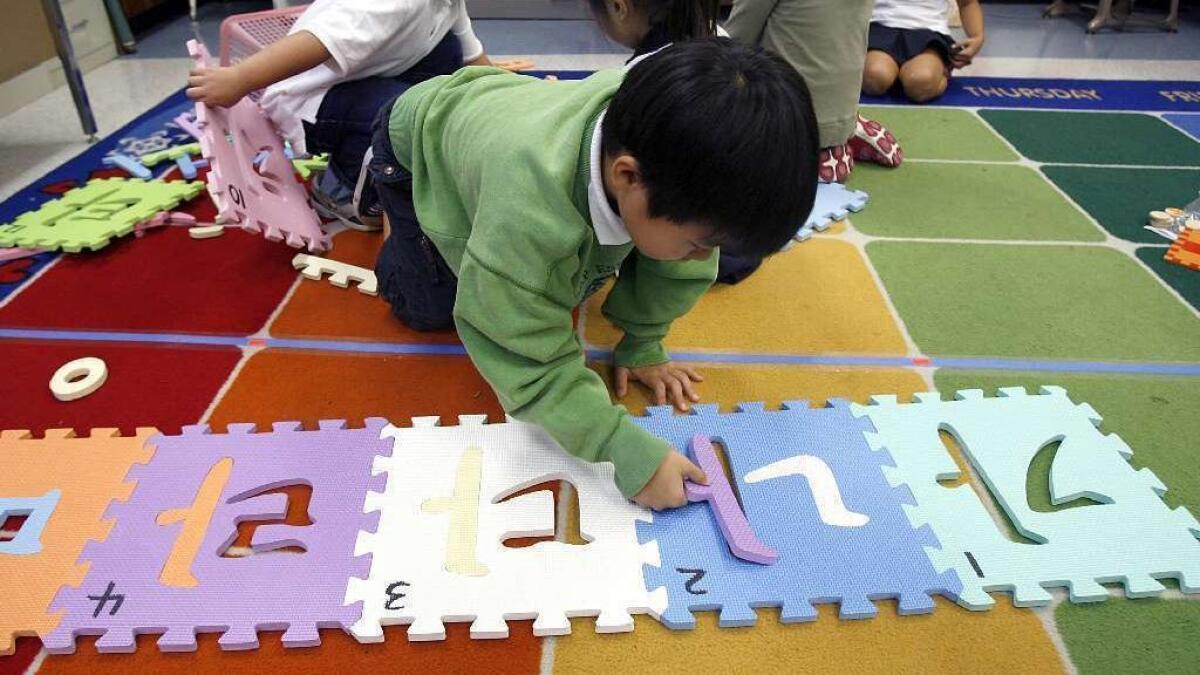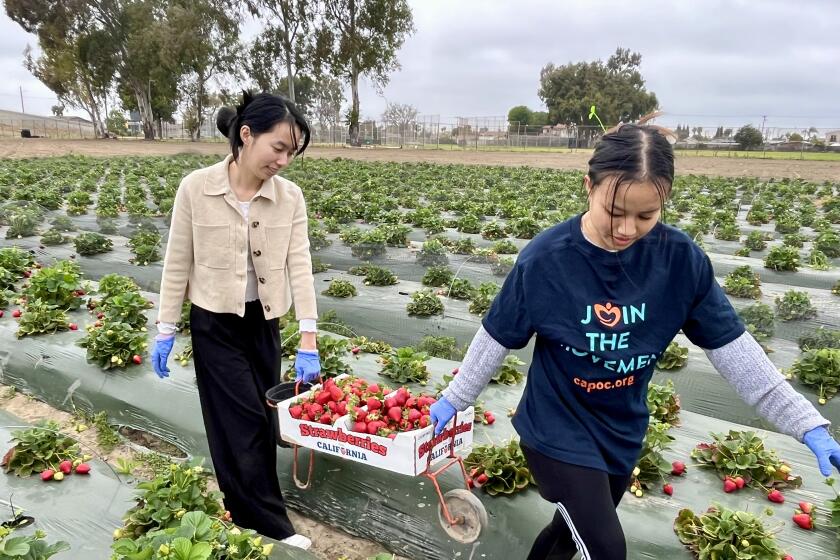Anaheim school will offer O.C.’s first dual-language immersion program in Korean
For years, Korean has been one of the most commonly spoken languages in Orange County, which is home to the second-largest Korean population in the United States after Los Angeles.
Yet public school students haven’t had the opportunity to be part of a Korean dual-language immersion program — until this year. Starting in August, Anaheim Elementary School District will offer the county’s first at Thomas Jefferson Elementary School, giving children the chance to become fluent by the sixth grade. The program will also be open to students living outside the district.
Sandra Song, principal of Jefferson Elementary, said Korean language and culture are increasingly important, not only in the global context, but in Orange County.
“Korean products are everywhere in our everyday culture, from cell phones, LG washer and dryers, cars like Hyundai and Kia, and now K-Pop and K-Dramas are popular,” she said. “There’s a part of Korea in our daily lives right here in Southern California.”
The school district has offered Spanish dual-language immersion programs since 2006, but decided to expand to include Korean because of its prominence locally and internationally.
According to the Modern Language Assn., Korean is one of the top five non-English languages spoken in California, and it’s also on the National Security Agency’s list of critical languages, which means the global demand exceeds supply.
In addition to the specific benefits of learning Korean, there’s also a general benefit to being bilingual in any other language, said Andrew Apodaca, coordinator of English language learners and language acquisition for the school district.
“The research shows that fully bilingual students outperform monolingual students,” he said. “There’s evidence that it boosts the cognitive development of our kids.”
Anaheim resident Conrad Haro said it’s these academic benefits that led him to enroll his 5-year-old son in the dual-language immersion program. Haro and his wife primarily speak Spanish to their son at home, so Korean will be his third language.
While Haro said he has some concerns about how he’ll be able to help his son with his schoolwork, he said he’s confident that the advantages will outweigh the challenges.
“I’m a big believer in the more languages the better,” he said. “Korean is a pretty big language. I have to look down the road, and the need for Korean speakers in 10 years or 20 years or 30 years is probably going to be a lot higher than it is now.”

Students will enter the program in kindergarten, giving them the opportunity to learn Korean for seven years, a timeline that Apodaca said matches the research showing that it takes between five and 10 years to become fully proficient in another language.
In kindergarten and first grade, about 80% of instruction will be in Korean and 20% will be in English, Apodaca said.
As students move up in grade levels, they’ll receive a higher percentage of English instruction until fourth grade, when they reach a 50/50 model, in which half of the instruction is in Korean and half is in English.
“We still offer all of the same subjects to the students in our language-immersion programs as our other student population,” Apodaca said. “Really what changes is the language in which the teacher and the children are speaking.”
The program will start with one kindergarten class and will add a new grade each year.
After graduating from Thomas Jefferson Elementary School, students will have the opportunity to enroll in Korean elective courses at several of the district’s high schools.
The aim of the program, said Apodaca, is for students to become not only bilingual — meaning they’ll be able to speak English and Korean fluently — but also “biliterate,” meaning they’ll also be able to read and write at an academic level in both languages, skills that even children who grow up speaking Korean at home may not have. (The state offers seals of biliteracy on high school diplomas, for which students of the dual-language immersion program will be eligible.)
Tammy Kim, co-founder and managing director of the Korean American Center, which offers adult Korean language classes in Irvine, said that being biliterate — not just bilingual — will give students a leg up in the new global economy.
“Of course being bilingual is an advantage,” she said. “But the advantage of being biliterate is that you can decide to go to college in Korea. You can have a corporate job.”
Kim said that it’s “about time” a public school in Orange County offered a Korean dual-language immersion program, and that she hopes the new curriculum at Jefferson Elementary becomes a model replicated at other nearby school districts.
“Americans can no longer afford to be monolingual,” she said. “When these children who are starting kindergarten go into the workplace, being bilingual will be a requirement.”
Thomas Jefferson Elementary School will hold information sessions at 10 a.m. on Jan. 30 and Feb. 2 for parents interested in the Korean dual-language immersion program.
Caitlin Yoshiko Kandil is a contributor to Times Community News.
All the latest on Orange County from Orange County.
Get our free TimesOC newsletter.
You may occasionally receive promotional content from the Daily Pilot.




